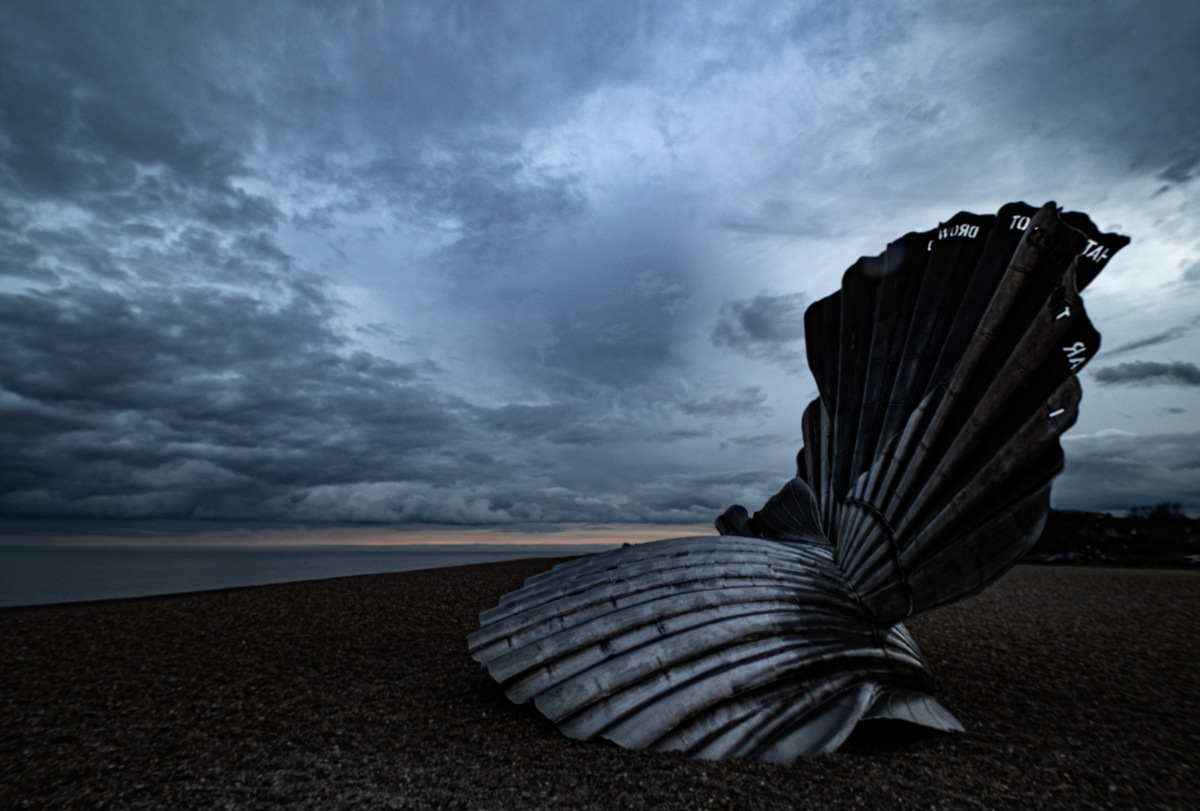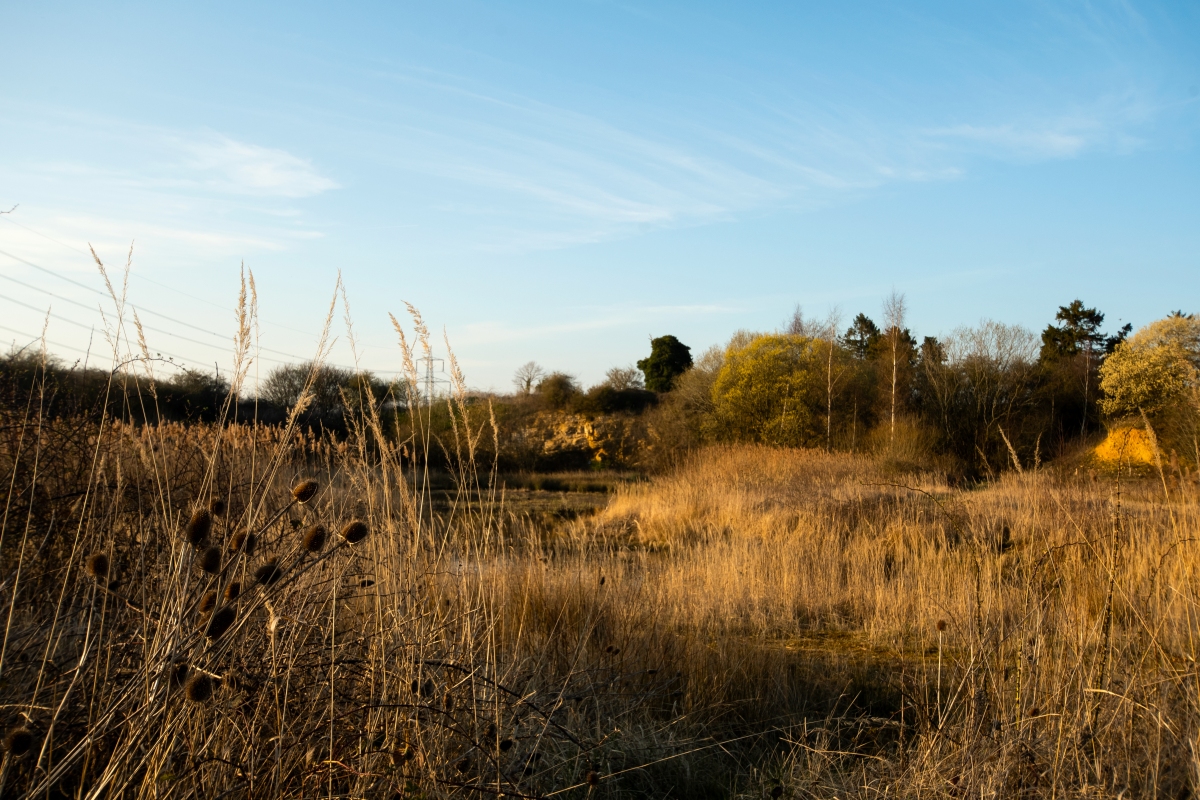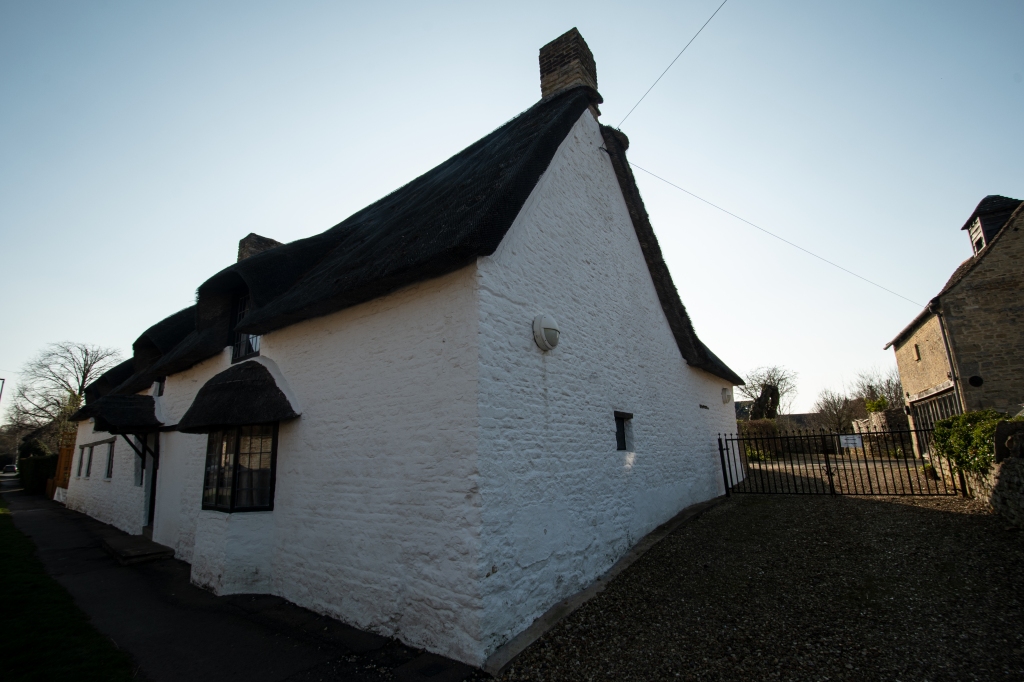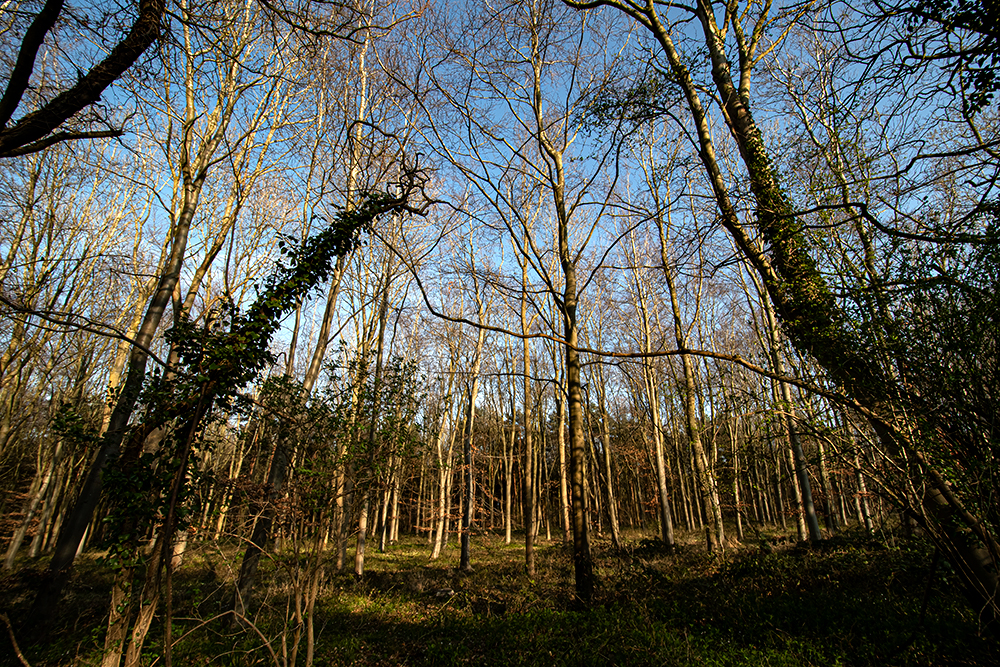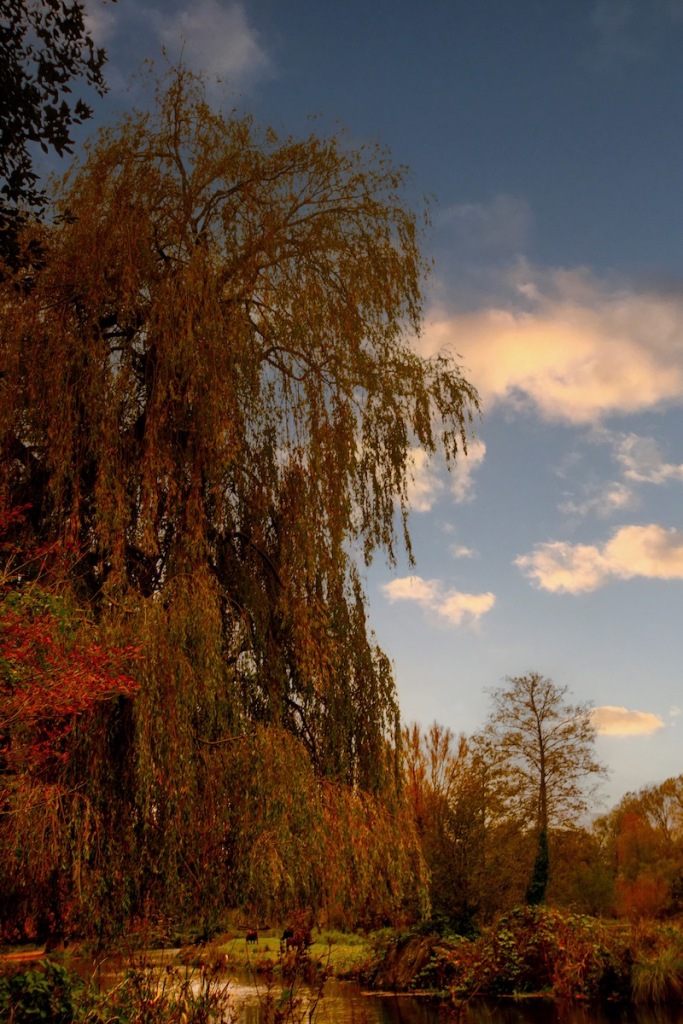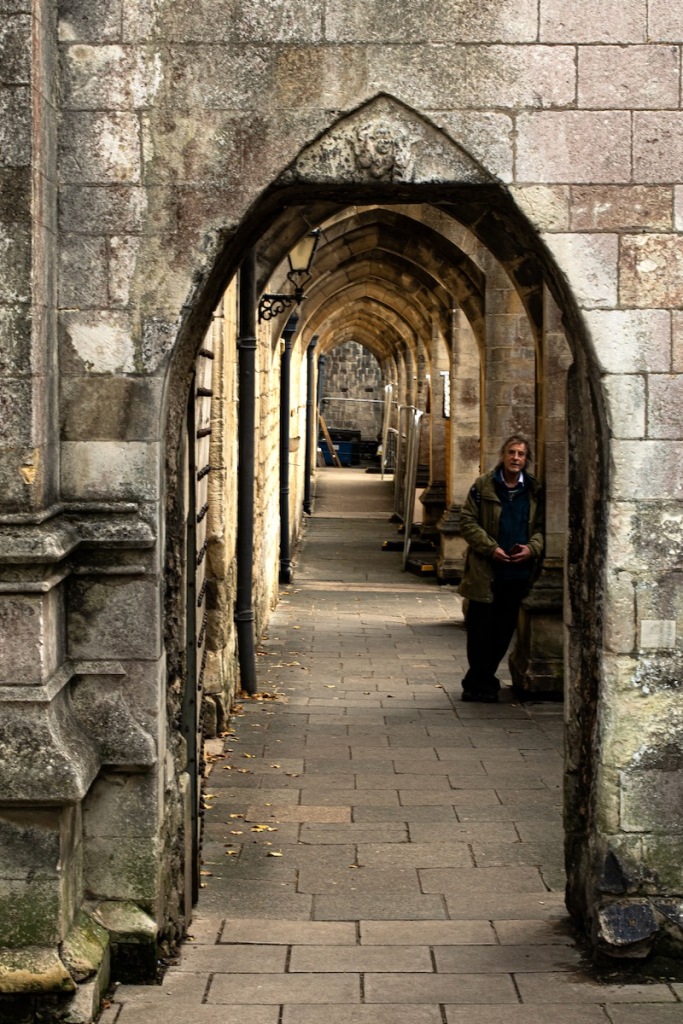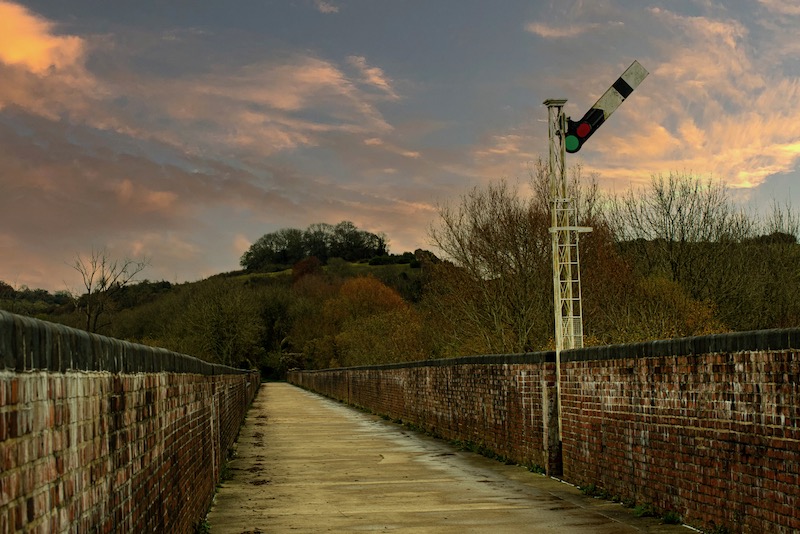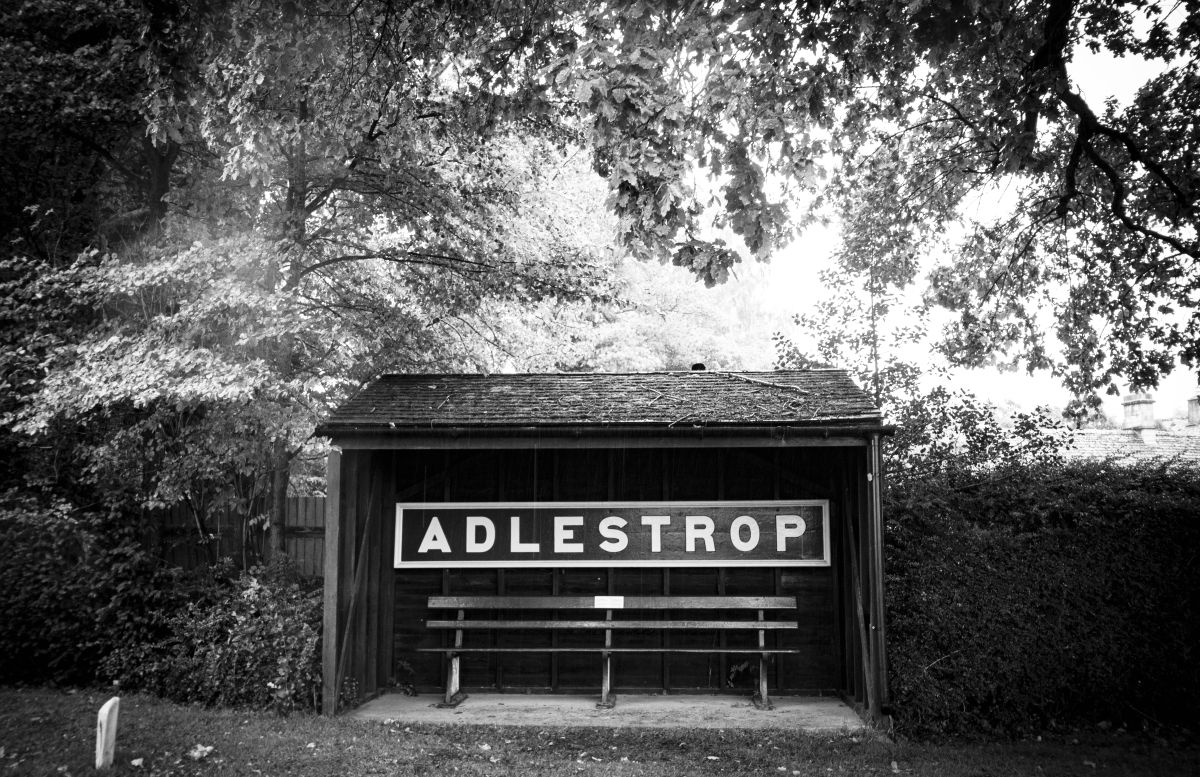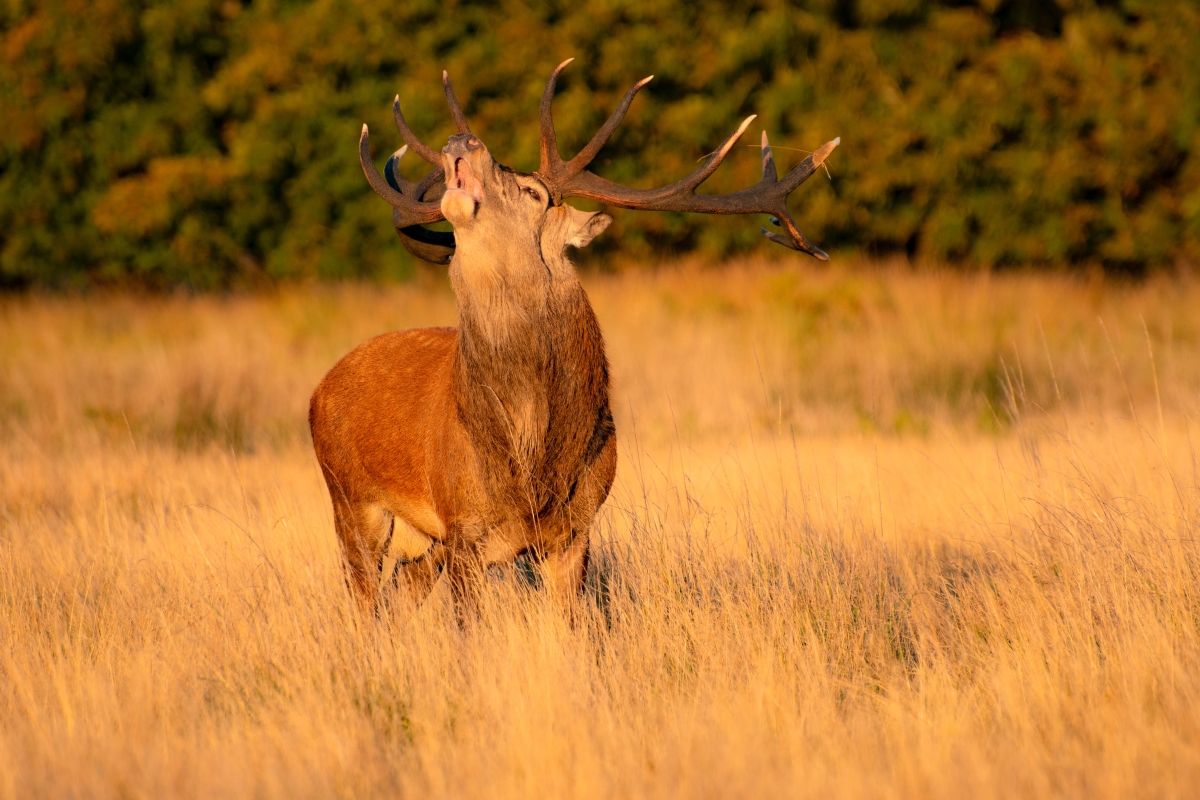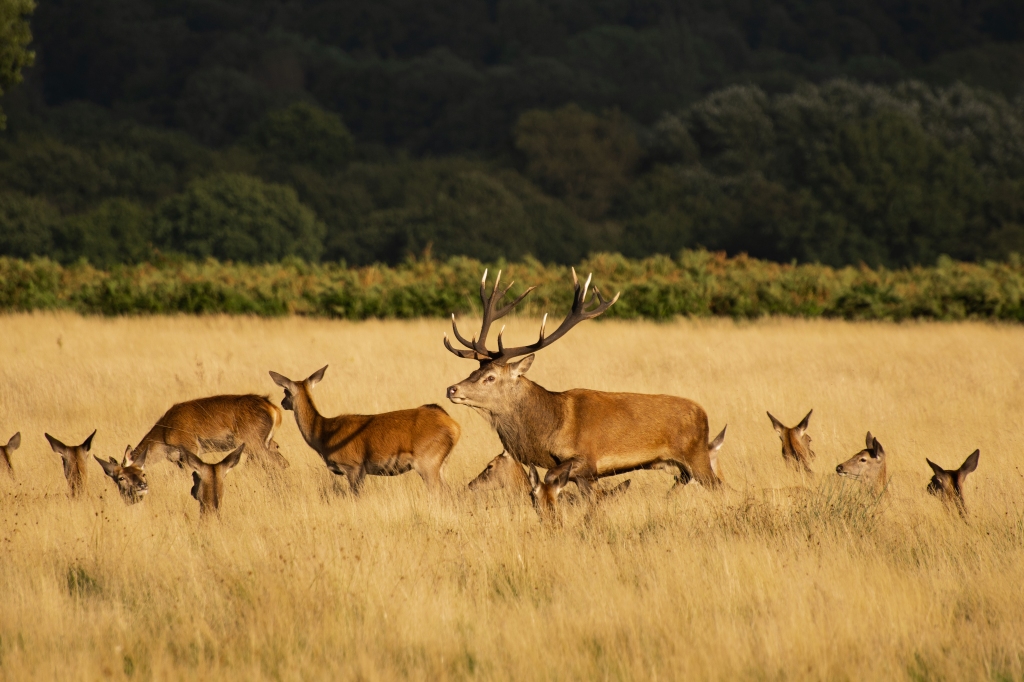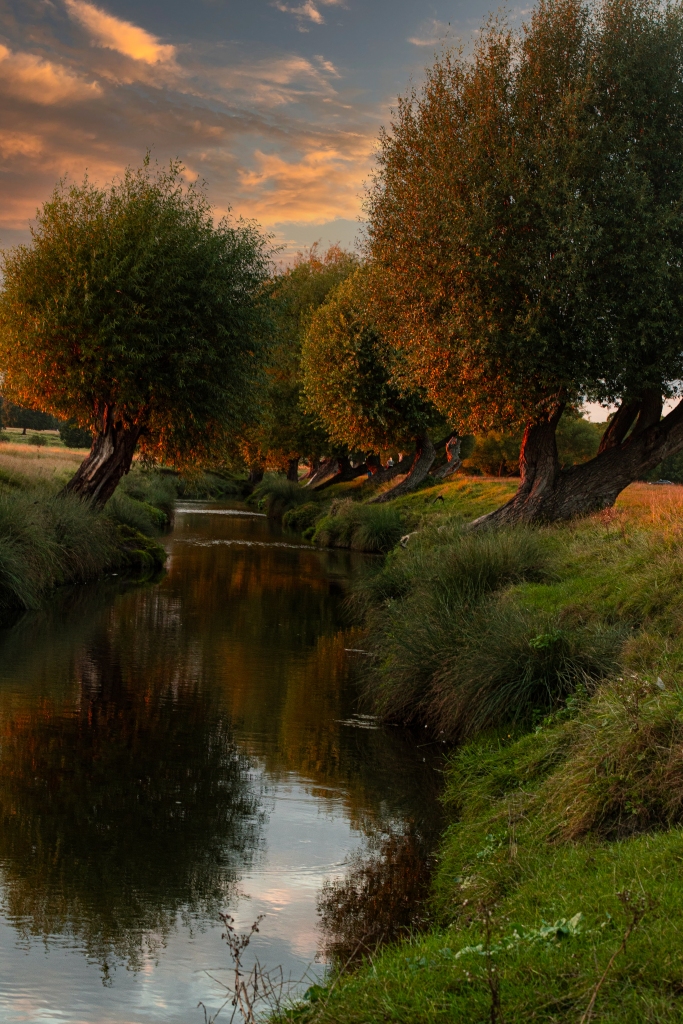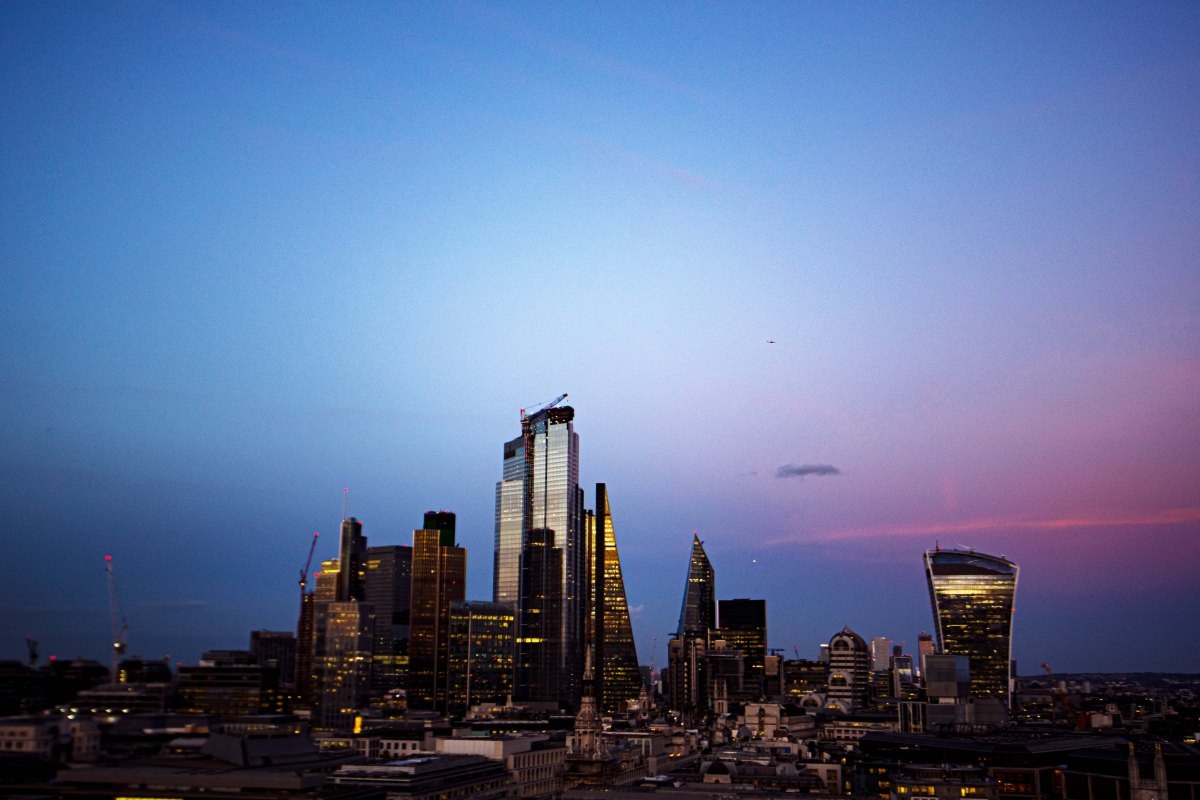George Crabbe, Aldeburgh and Peter Grimes
Few pieces of writing can have been more bound up with the place they sprang from than Peter Grimes and the town of Aldeburgh on the Suffolk coast. The story is part of a collection called The Borough, published in 1820, by the poet George Crabbe, a native of the town and son of a troubled alcoholic tax-collector. Though his descriptions of life and work here could be harsh and graphic, he and his town have contributed more to each other’s repute than either could have imagined.
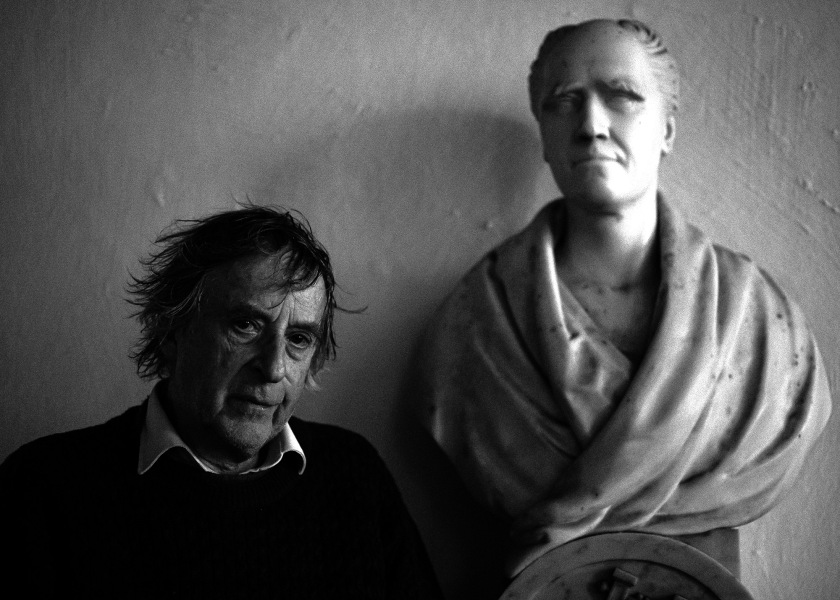
While Crabbe’s own stock as a poet was relatively low in the first half of the twentieth century, his dark tale of the transgressive Suffolk fisherman was taken up and turned into a highly successful opera by Benjamin Britten. With its turbulent score and unsettling themes of child abuse and self-destruction, its premiere at Sadler’s Wells in June 1945 was seen as a watershed moment in British opera.

Britten was himself a Suffolk man, having been born in Lowestoft in 1916. Together with his partner, the tenor Peter Pears and the producer Eric Crozier, he founded the Aldeburgh Festival of Music and the Arts in 1948. It grew rapidly. Stars from the jazz world performed here, notably John Dankworth and Cleo Laine. Actors from the Royal Shakespeare Company started making regular appearances. Princess Grace of Monaco took part in a poetry recital. Sviatoslav Richter played for The Queen Mother. This windblown outpost, dependent on the sea but knocked about for centuries by its unruliness, had become cool.

Considering the flatness of the land, this reach of coastline is dramatic in the extreme. But then, when you reflect on its past you quickly realise that much of the drama is, and has always been, in that very flatness; whole chunks of the coast dragged off across the centuries by storm surges; flood defences thrown up to keep the invasive neighbour at bay; houses vanishing overnight into the sea.

In 2013, in a series of performances to mark the centenary of Britten’s birth, the posthumous presences of composer, poet and haunted anti-hero all came together for a production of Grimes on the Aldeburgh beach. This was by all accounts a memorable event.

Crabbe’s own boyhood was spent at Slaughden, now home to the town’s two sailing clubs. It lies a few hundred yards to the south like a suburb well beyond its best years. In the nineteenth century this was a busy fishing village, and two hundred years earlier it had outranked Dunwich as this coastline’s main port.
Slaughden’s near neighbour is the defiant, squatting form of a martello tower. one of more than a hundred such massive towers built in the opening years of the nineteenth century to keep Napoleon out.

Its walls are an astonishing thirteen feet thick and it is built in the pattern of four interlocking circles known as quartrefoil. You’ve never seen a more daunting and impenetrable holiday let, which is what it has now become, with its teak floors, soaring innards and stone-flagged battery on the roof.

Between here and the town you find yourself walking along a narrow strip of shingle. This is all that now stands between the sea to the east and the approach of the broadly curving River Alde from the west. Viewed from this spit, its curves look as grand as lakes. Then it narrows, aims for the sea but is headed off by the sharp-right taking it down past Orford and its eventual debouche at Simpson’s Saltings. Studied on the map, such a long meander to the mouth looks almost perverse.
The war between Suffolk’s edges and the sea is ongoing. Up the coast at Corton officers at the organisation Coastal Partnership East are considering the use of a defensive process known as sandscaping. This entails the transfer of sand from “sustainable” locations offshore and pumping it onshore at points where an enlarged beach would provide better resistance to the incoming waves.

Crabbe’s origins and childhood were immeasurably humbler than his eventual reputation as a poet. In 1768, at the age of fourteen, he left school and became apprenticed to a doctor. The knowledge he gained during this time was to inform and enrich his subsequent verse about the hard-pressed fishing community from which he sprang.
As a young man and disaffected apothecary-surgeon, newly in love, he tried his luck in London, unsuccessfully seeking support from potential patrons such as the Lords North and Selburne, and falling into despair. The statesman and philosopher Edmund Burke saw merit in his work and, to the young man’s undying gratitude, not only enabled him to take Holy Orders but also financed the publication of his poetry. Though the bulk of his working life was spent as a clergyman, with stints as chaplain to the Duke of Rutland at Belvoir Castle and as Rector in the Wiltshire town of Trowbridge, his writing remained infused with the spirit of his coastal beginnings. Some consider him to be the last of the so-called Augustans such as Alexander Pope, Samuel Johnson and John Dryden on account of his shared use of the heroic couplet.

Aldeburgh and Peter Grimes have been so influential on one another that they can seem virtually twinned. In 1964, recalling the “unhappy summer” he had spent in America early on in the Second War, Britten described his pleasure at coming across the works of Crabbe in a Los Angeles bookshop, and at reading “a most perceptive and revealing article about it” by the eminent English novelist E.M. Forster. The article in question appeared in The Listener of May 29 1941 and opened with the statement that “to talk about Crabbe is to talk about England”.
The composer’s enthusiasm plainly contained a nostalgia quickened by absence. In her excellent 2022 book A Time and A Place, about Crabbe, his native town and county, Frances Gibb observes that Britten had already bought and renovated the circular Mill House at Snape, on the northern edge of Aldeburgh. Moreover he had spent his childhood in East Anglia, having been born in the port town of Lowestoft just before the First War. It was at Snape’s old Maltings premises that he was to found the now internationally renowned Aldeburgh Festival.

Though this part of Suffolk was one of the most populated areas in the country at the time of the Domesday Book in 1086, the violent history of the sea’s relationship with the shore has been giving the shape of the coast a provisional nature for centuries. During the sixteenth, these shiftings brought about a sheltered haven which in turn attracted such trade and prosperity that Henry VIII conferred borough status upon it in 1529. The Golden Hind and the Greyhound, two of Sir Francis Drake’s most renowned ships, were built here. But then down again sank the town’s fortunes when the silting of the River Alde prevented the berthing of large vessels. Such is the random tyranny of waterways.
Aldeburgh today is worlds away from the “poor and wretched place” depicted in the biography of Crabbe written by his son and namesake and published in 1834. Still, if you choose to travel carlessly and it’s a Sunday, you can feel the isolation gathering. The buses here are sabbatarian. There used to be a deeply rural railway branch line linking Saxmundham, on the Ipswich to Lowestoft line, with the town, but in 1963 Dr. Richard Beeching, chairman of British Railways, took one look at it and swung his infamous axe. This almost-lifetime later, it’s one of those old routes which can ghost its way back into view here and there in pale green linear traces interrupted by the later world. All very Betjeman.

Coming up from the Martello and Slaughden, the foot of the town arrives in a bright livery of blue and white. Cottages, family homes, summer lets; a modest but prosperous-looking hotel – the first of many such – with protruding glazed dining rooms. A couple looking silently out from a lounge in the early season. Nearby is a fish-and-chip shop whose standard portions at a tenner a go are stated to be the best in the world.

Across the seafront road, the shapes of strange buildings: a narrow three-storey watchtower, one room per floor, with a domesticated air and a painted spiral staircase running ornately up the side. On the beach a range of wooden buildings, black as tar; fresh sea-food outlets; a tackle and bait shop, a fish-smoker; stranded winches on the ground with rusting cog-teeth and tangled cable. They could almost be found objects in a museum of nautical history. Nearby, the venerable form of The Moot House, impeccably preserved for its 570-odd years, which is now itself doubling as museum and council meeting room.

At the heart of the distinctive roadscape near the front are the long parallel forms of Crabbe Street and the High Street. It is as if this town of just over two thousand residents (of whom one third are second-homers) knows it is worth two main drags, not one. Between them are narrow ligatures of paved alley and, further towards the beach, the converging pedestrian route of Craig Path. These seafront acres are as distinctive as they come.
The High Street shop fronts – some formal, some folksy – give out a confident knowledge of their clientele: Contemporary Arts; Two Magpies Bakery; Seasalt Cornwall (clothes); Regatta Restaurant; Munchies; Suffolk Hideaways; One Five Seven Antiques and Interiors; The Aldeburgh Gallery; a big red-fronted Co-op. Carry on beyond these and you come to the discreetly famous little cinema which, with its half-timbered exterior, looks indistinguishable from a cottage.
Opened in 1919, it is just ten years younger than the Electric in Birmingham, which is reckoned to be the oldest working one in the country. This being Aldeburgh, it was never going to be any old flickhouse and is in fact a charity supported by more than a thousand Friends who in turn benefit from priority booking. Some very famous people have passed through its unshowy doors: Bill Nighy, star of the hit movie Living and resident of the town; Lenny Henry, Griff Rhys Jones, Ralph Fiennes, Joanna Lumley, Libby Purves and her husband Paul Heiney. Lest you should ever mistake the Aldeburgh of today for a backwater.

Just round the corner is St. Peter and St. Paul’s, the Festival’s home church, with its window in memory of Britten and its bust of Crabbe by the Saxmundham sculptor Thomas Thurlow. Elizabeth Garrett Anderson, Britain’s first woman doctor and first female mayor, worshipped here.

The High Street turns into Wentworth Road, which peters out soon after passing the hotel of the same name. From the outside this looks for all the world like a residential terrace, a comfortable one, topped with half-timbered gables. In the spacious ground floor lounge with its sea-view windows sit quiet couples of a certain age who might just have arrived from the interior of a Terence Rattigan play.
North again, and the spread of the famous shingle beach broken only by the controversial form of a bespoke steel sculpture, of which more in a moment. Beyond that, the older but no less hotly contested presence of the Sizewell B nuclear power station, with the great dome appearing to rise from its shoulder like a strange white moon. Further north and out of view along the coast lies the village of Dunwich, once the tenth largest town in England but now, thanks to the twin villains of climate change and coastal erosion, down to a population of little more than one hundred. Because of the eighteen church buildings consumed by the sea over the past millennium, not to mention the mint, guildhall and sundry mansions, the long-sunk settlement has acquired the nickname of Atlantis.
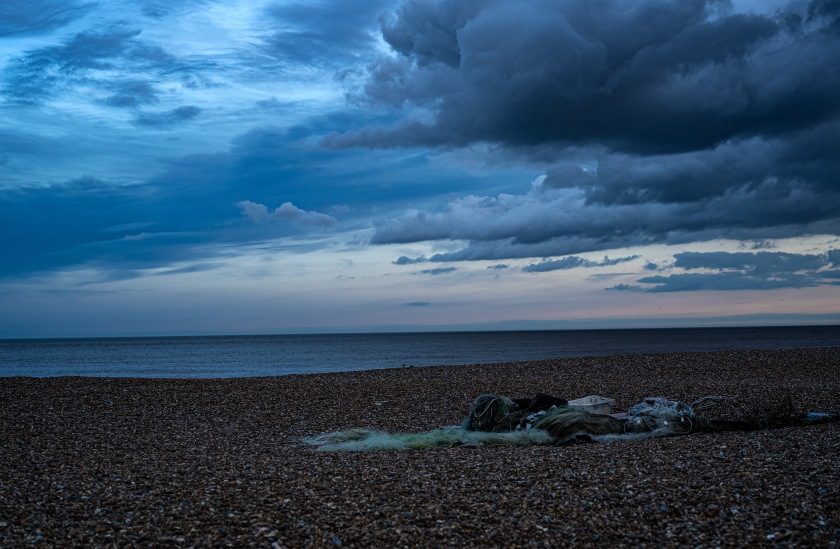
The 2013 production of Grimes on the beach at Aldeburgh, directed by Tim Albery, could hardly have been more site-specific, bringing, as it did, a compelling circularity to the life of the poem. This is after all the very place that begets the character of Grimes; from which Crabbe, also a native son, constructs his rhymed narrative; from which Britten, himself an East Anglian, draws inspiration for an opera; which is later reprised, in the centenary of the composer’s birth, on this self-same reach of Suffolk coast. As an instance of place and poem committed to an endless exchange of influence, this one is as striking as they come.
The Guardian’s music critic Andrew Clements was acutely tuned to these associations, applauding the design of the set which featured dilapidated fishing boats and timbers built at the water’s edge on the shingle beach. This was, he wrote, “a wonderfully potent setting for an opera whose every bar is permeated by the sea.” As to the sometimes problematic matter of Grimes’s character, the critic saw “not the wronged outsider, a misunderstood dreamer, but an unremarkable-looking man profoundly at odds with himself.”
Other members of the audience noted the discomfort of the shingle over a period of almost four hours and the force of nature’s wind machine. “Bracing” was the popular word among an audience more than happy to suffer for Britten’s art. “Watching this Grimes,” wrote Clements, “on a balmy, windless summer evening, you felt, would never have seemed quite right.”

For Frances Gibb in A Time and a Place, it was, despite the challenge of the elements, “unforgettable – a brilliant fusion of the story of Grimes, Britten’s haunting music, and Aldeburgh itself in different moments: the present tense of 2013, the mid-century era of Britten’s first arrival in the town, and the ‘little venal borough’ of Crabbe’s day.”
What of Crabbe himself? A driven and determined maker of narrative verse, he was rated by Lord Byron as being the equal of their contemporary Coleridge “in point of power and genius.” His other A-list admirers included Jane Austen, Samuel Johnson and Walter Scott.
In his concentration on stories of hardship and social injustice, his world could appear closer to that of Charles Dickens than to those of his fellow poets. After his fall from fashion in the twentieth century, it was not until Britten’s interest in Peter Grimes that his stock rose again.

Crabbe had not one but three professional lives. After his time as a surgeon’s apprentice – a disaffected one – he became a clergyman, dutiful in a succession of parishes and, running a course through these other incarnations, his true calling of poetry. Much of his work, not least The Borough, has an obsessive, dogged quality, partly brought on by the long successions of rhyming couplets and their stresses of iambic pentameter. And yet, once readers have acclimatised themselves to the form, it is capable of becoming a fitting bearer of the narrative – a sort of sprung prose.
Though Forster may not have been convinced of the poetry’s greatness, he had no doubts about Crabbe’s sureness of touch, nor about the vividness with which he could evoke the essence of a place. These lines, now some of the author’s best-known, convey with a stark clarity the peculiar and enclosed world of the estuary, and its effect on the troubled Grimes:
Where did this haunted anti-hero of Grimes come from? According to Crabbe’s son, there was indeed an Aldeburgh man on whom he was based – the crucial resemblance being that this person, a fisherman himself, had employed a succession of apprentices whose deaths while working for him went unexplained.
When tides were neap, and in the sultry day,
Through the tall bounding mud-banks made their way…
There anchoring, Peter chose from man to hide,
There hang his head, and view the lazy tide
In its hot slimy channel slowly glide;
Where the small eels that left the deeper way
For the warm shore, within the shallows play;
Where gaping mussels, left upon the mud,
Slope their slow passage to the fallen flood.
George Crabbe
As the writer Blake Morrison has observed, Crabbe’s often relentless social realism did not prevent him from doing well financially. “In his fifties,” wrote Morrison in The Guardian in the year of the Grimes beach production, “after years scraping a living as a country parson, he became a poet whom publishers wanted on their list, so much so that John Murray offered three thousand pounds for one of his volumes – a figure few poets could command today, even though it was worth eighty times more then.”
If Britten and Pears brought about the later revival of interest in Crabbe, it’s no less true that the Aldeburgh Festival put the town on the map as never before and contributed greatly to its prosperity. This year is its seventy-fourth, and if its organisers felt they had a macabre tradition to maintain in the wake of Grimes, they could hardly have made a better choice than the world premiere of an opera called Giant by Sarah Angliss. This is based on the “true and gruesome” tale of a surgeon called John Hunter and his obsession with one Charles Byrne. This man, known as The Irish Giant, was “truly betrayed in one of the most disturbing, chilling and horrifying acts during the era of the grave robbers.”

If Peter Grimes was a divisive figure, he is not the only one in the town’s history. Approach the strange steel figure on the beach and it turns out to be a large sculpture called Scallop. When it was installed here in 2003, it created such a hoo-hah that not even an angry sea could drown out the cacophony of cheers and boos from a divided town.
It is the work of locally based but globally renowned artist Maggi Hambling, already labelled controversial for her 1998 sculpture of Oscar Wilde behind St. Martin’s in the Field Church in central London, in which the playwright is seen emerging from a green granite sarcophagus with a cigarette in his hand.

Just as vandals have repeatedly sawn off Wilde’s cigarette, so protesters against Scallop have in the past daubed slogans on the fourteen-foot-tall structure ranging from “Happy New Year” to “It’s an old tin can.” Nearly twenty years ago, when it was installed – or plonked down, as its detractors had it – it drew the town’s hostility almost as much as Grimes had done.
Approached from the south along the shingle beach, it might at first sight be a strange hunk of sea-wrack, even the prow of some dismembered ship. Another weird sighting in a coast full of such things. Closer to, it becomes a peculiar hybrid of creature parts, some cretaceous and grounded, others almost fine and airy despite the heavy metal fabric of its whorls and skirts. Hambling was quoted as saying that the piece couldn’t be considered complete until people had made love beneath its sheltering form. Who said sculpture couldn’t be functional as well as decorative?
At the top of it is a string of words picked out in capitals across the corrugations. They read “I hear those voices that will not be drowned,” quoting from the opera’s tormented anti-hero. And so, even on a bright spring day with the sun shining back from the sculpture’s myriad facets, there is to be no escaping from the dark, watery world of Peter Grimes, of which Hambling is an ardent admirer.
If the local community had been divided over Grimes – the character, the poem and the opera – they were no less riven by the appearance of Hambling’s offering. The outrage went national when, in 2004, soon after Scallop’s installation, The Daily Telegraph quoted The Aldeburgh Gazette’s opinion that the placing of such a piece on an untouched stretch of the beach was “an act of sheer arrogance.”
The dispute almost turned nasty, with detractors pointing out that the beach is that almost sacred thing in this brand of England, an SSSI, or Site of Special Scientific Interest, and the council leader, a Mr. Herring, announcing that the controversial sculpture would stay put.
The veteran TV arts presenter and Aldeburgh dweller Humphrey Burton weighed in by telling readers of The Guardian that it was “hard to keep silent when one’s regular walk by the open sea has been so casually violated.” Still, when the East Anglian Daily Times ran a readers’ poll, only 738 registered an objection to Scallop’s location, with 2,163 in favour of its remaining where it was. And there, for better or for worse, it still is, rooted to the town, as immovable from the shingle as is Britten’s once controversial Peter Grimes from the operatic canon.
With greedy eye he look’d on all he saw,
He knew not justice, and he laugh’d at law;
On all he mark’d he stretch’d his ready hand;
He fish’d by water, and he filch’d by land:
Oft in the night has Peter dropp’d his oar,
Fled from his boat and sought for prey on shore;
Oft up the hedge-row glided, on his back
Bearing the orchard’s produce in a sack,
Or farm-yard load, tugg’d fiercely from the stack;
And as these wrongs to greater numbers rose,
The more he look’d on all men as his foes.He built a mud-wall’d hovel, where he kept
George Crabbe
His various wealth, and there he oft-times slept;
But no success could please his cruel soul,
He wish’d for one to trouble and control;
He wanted some obedient boy to stand
And bear the blow of his outrageous hand;
And hoped to find in some propitious hour
A feeling creature subject to his power.

Aldeburgh is the fifth in the Place of the Poem Project.

